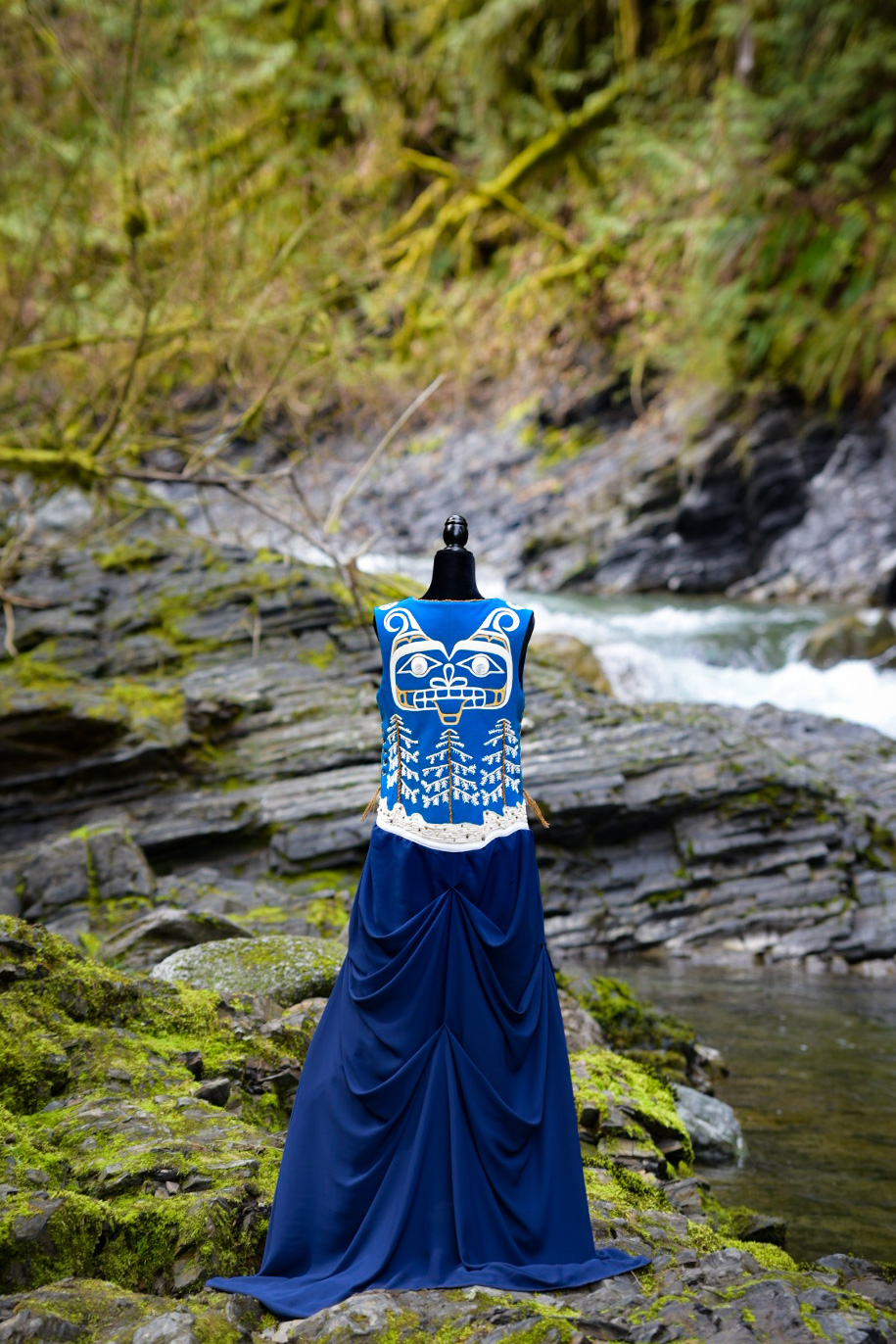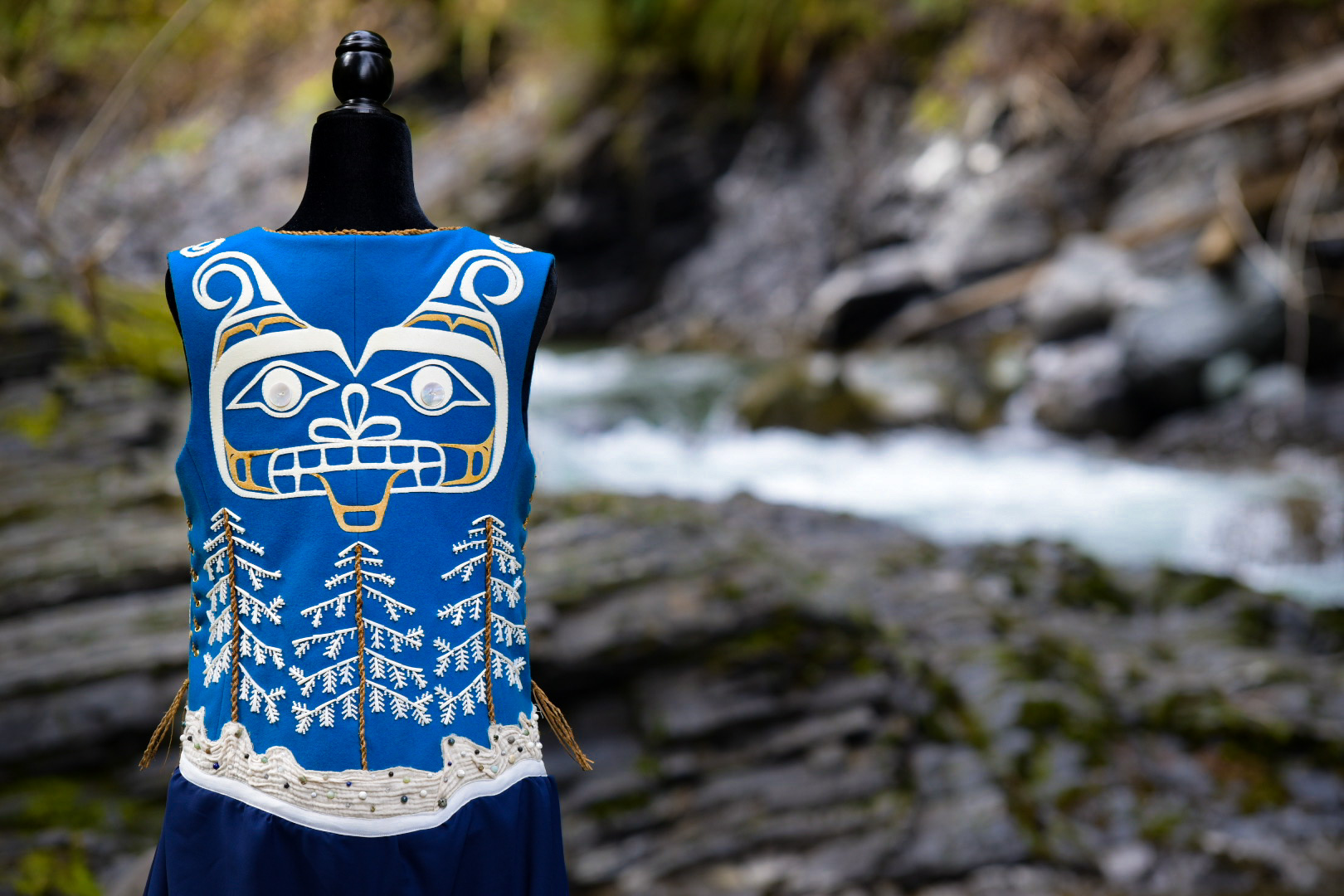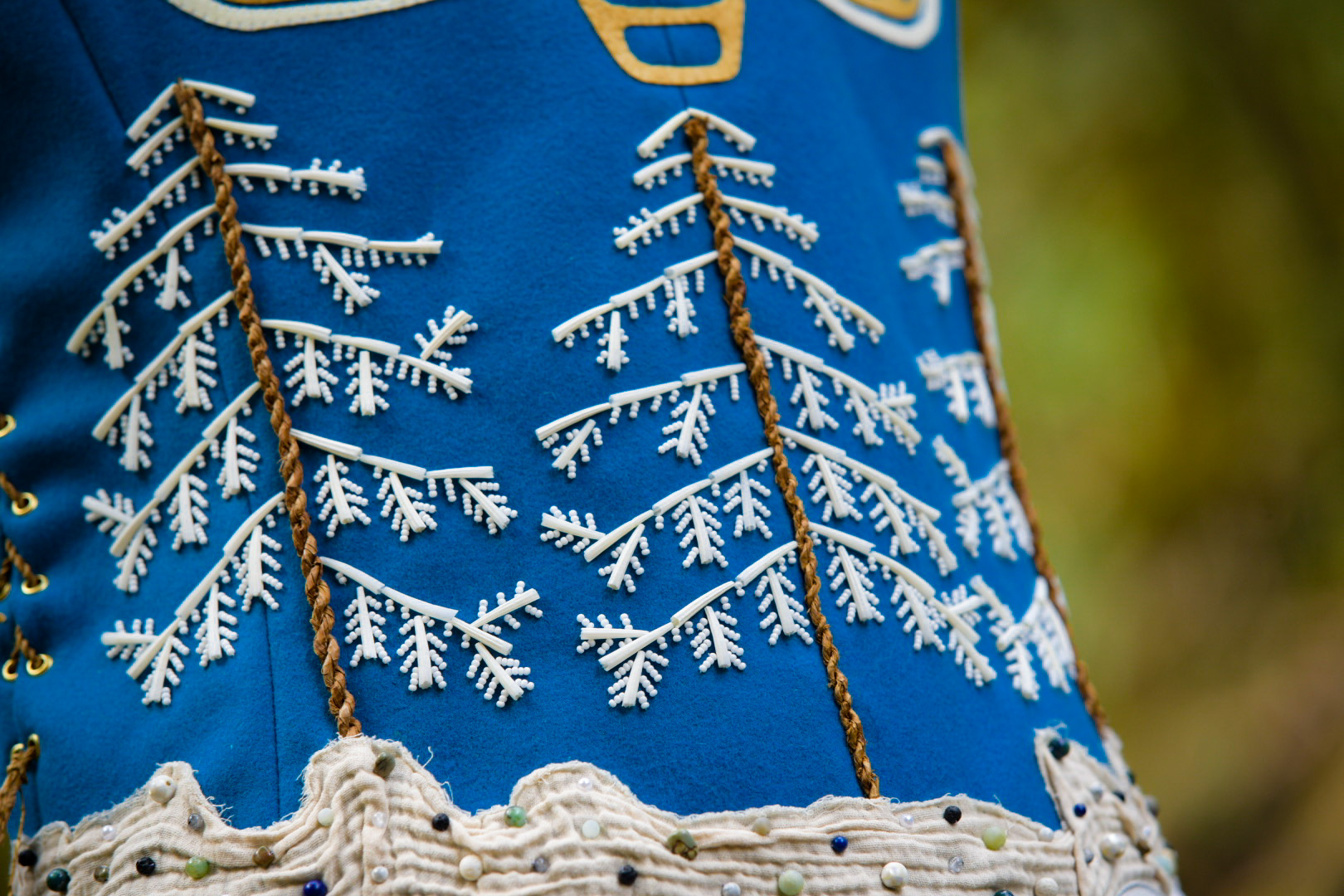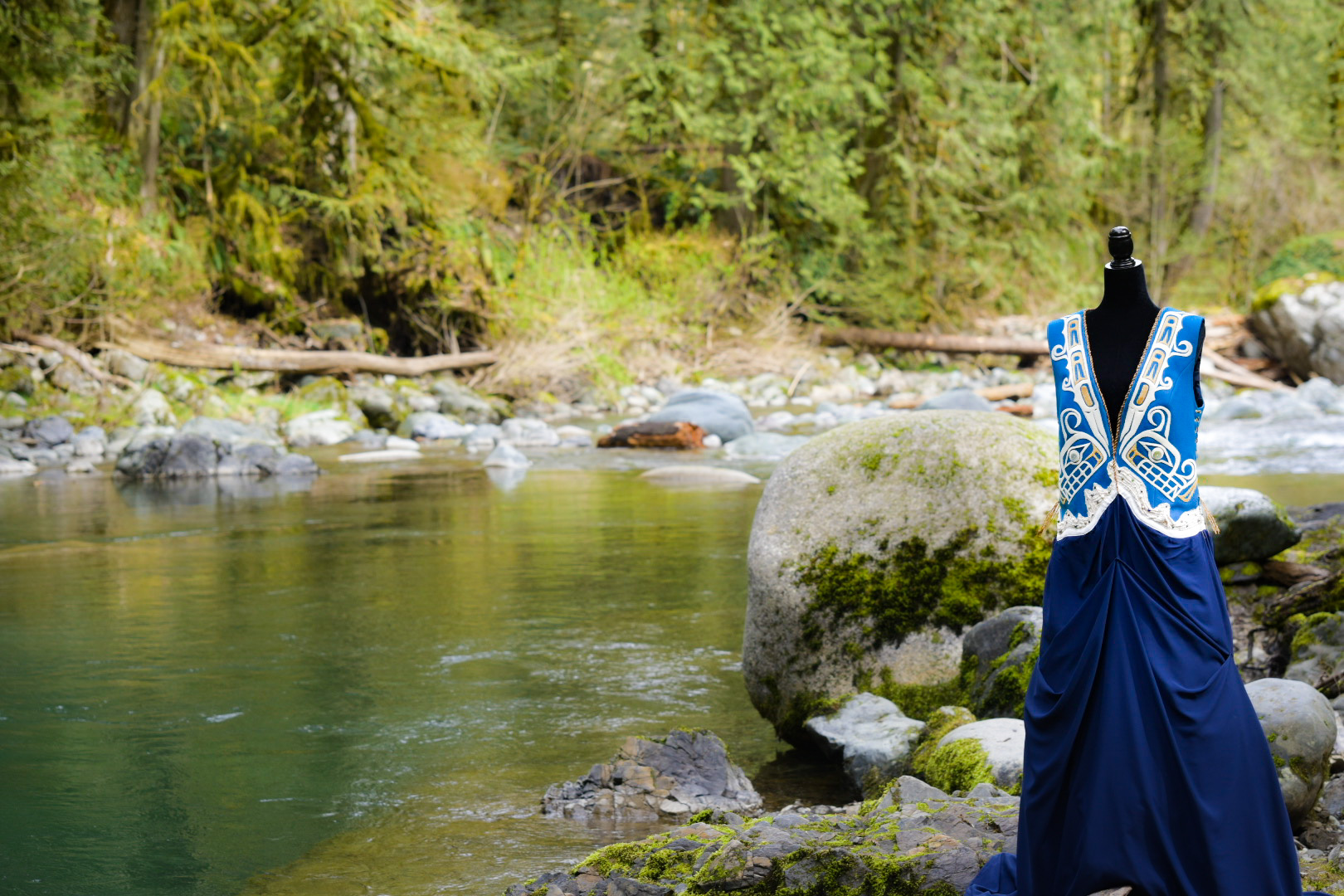Rebecca Baker-Grenier is a Kwakiutł and Sḵwx̱wú7mesh artist originally from Fort Rupert. For her Emerging Artist Scholarship, Rebecca mentored with Himikalas Pam Baker in textile design. Rebecca’s scholarship work exemplifies Indigenous resiliency and the protection of Indigenous lands referencing the court case Hunt v. Halcan Log Services Ltd., 1986.
Instagram: @rebecca.baker.g


Wazulis, 2022
Photography credit: Zia Jospeh

Wazulis, 2022
Photography credit: Zia Jospeh

Wazulis (detail), 2022
Photography credit: Zia Jospeh

Wazulis, 2022
Photography credit: Zia Jospeh
“The question of territorial claim is confusing because if we are truly walking the path of maya’xa̱la then we consider our brethren as equals. We display our crests – the eagle, the wolf, the bear and raven – so proudly. If we are equal to our brethren, what territorial claim do they have? If we are equal to them, we don’t have any true right or claim either because we are a part of something; we’ve lost sight of that. This is where land claims become an issue and they shouldn’t be.”
– Chief Beau Dick
“In 1986, Halcan Log Services began clearcutting Wazulis (Deer Island) just off the shore of Tsaxis (Fort Rupert, on the north east coast of Vancouver Island). The Kwakiuł Nation demanded the company cease logging and filed for an injunction against them, Hunt v Halcan. The Kwakiuł Nation asserted Aboriginal and treaty rights over Wazulis to fish, trap, harvest food and medicines, preserve their ancestors’ grave sites, and to carry out other traditional uses, protected under s.35 of the Constitution Act. The Kwakiuł people obtained the injunction and were successful in protecting Wazulis for generations to come.
The Kwakiuł Nation is bound to its land under the inherent rights and obligations encompassed within Kwakiuł law, to treat the land with Maya’xa̱la. Maya’xa̱la means respect – for yourself, for others, and for the land. We must uphold the land, the plants, the water, and the animals with the utmost Maya’xa̱la – for they are our relatives.
My late grandfather, renowned artist Chief Tony Hunt Sr., painted a sisiutł (double headed serpant) on the front of the gukwdzi (bighouse) in Tsaxis, representing a supernatural power protecting the sacred space where our laws are upheld through songs, dances, and ceremony. The sisiutł on this dress represents our collective responsibility to protect our lands and oceans as sacred spaces.
The sisiutł depicted on the dress is made of traditionally tanned and smoked deer hyde. The trees are made of woven cedar bark rope and dentalium shells. The beach is constructed with hand-dyed fabric and embellished with lapis lazuli, azurite, amazonite, coral, lava rock, quartz, jasper, and abalone. The dress is made of recycled wool to pay homage to the wool button blankets that we wear in the gukwdzi. The cedar bark rope incorporated into this dress was made using the same materials and weaving techniques as a cedar rope described in the origin story of the Kwakiuł Nation. Using materials harvested from the land emphasizes the importance of maintaining a mutual relationship with the land.
In the design of the dress, the sisiutł wraps around the person as a supernatural protector. The outline of the beach is shaped to match the shore of Wazulis as it appears on a map and the deep blue of the skirt symbolizes the ocean, which is also wrapped around the wearer. When one wears this dress, they embody the landscape and our obligations to it under Kwakiutl law.
This piece tells the story of Wazulis and brings awareness to colonialism’s destructive force on our land, resources, and culture but, more importantly, it tells a story of resilience.”
– Rebecca Baker-Grenier